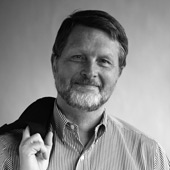The art of Tom Reed evolves from delightfully imagined places, steeped in storytelling traditions and the artist’s acute observations of nature. His art reveals an intelligence behind it that connects to art historical movements, yet there are references to pop culture, comic books, found objects, and folk art. All of these influences are neatly combined utilizing his superb sense of craftsmanship.
Materially, Reed’s romantic narratives begin with a substrate of glued, pulpy papers from old coloring books and other ephemera, upon which he begins to build his story. His color is often subtle, and occasionally heightened with translucent colors he draws from his idiosyncratic palette. An avid outdoorsman and camper, Reed takes special delight in painting nocturnal landscapes. It’s obvious to me that he has spent many hours observing the muted “colors” of nighttime. Delicate lines from pencil harmonize and overlay the imagery within each piece. You’ll see this in works like Pressing On, or Flood at Night, with its wood grain, delicate patterning, and Hanna-Barbara-like mountains and trees.
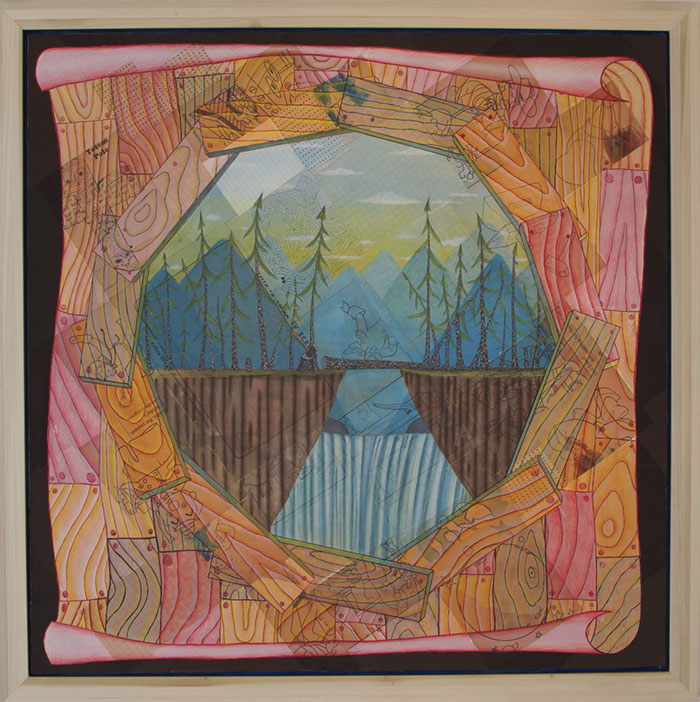
pressing on, 2014 | mixed media on panel, 54 x 54"
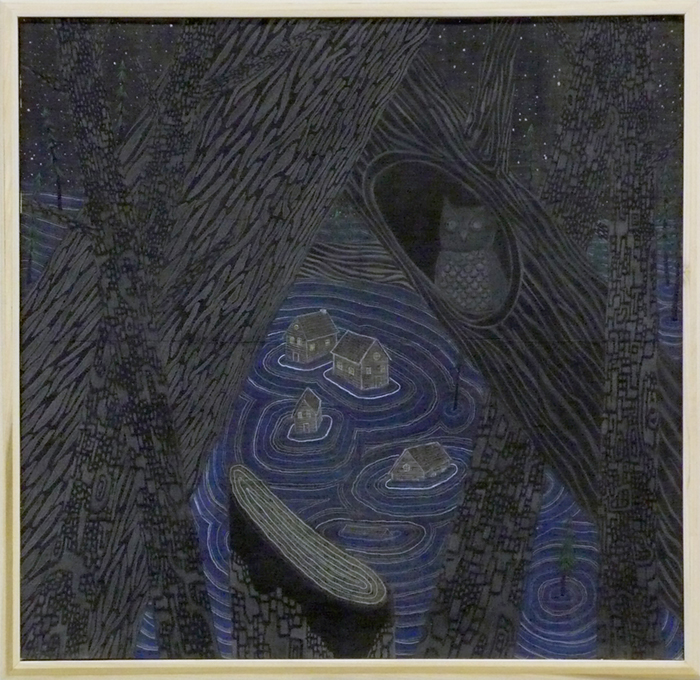 flood at night, 2014 | 26 1/2 x 26", mixed media on panel
flood at night, 2014 | 26 1/2 x 26", mixed media on panelIf the filmmaker Wes Anderson were a painter, this might be the sort of work he’d produce. Reed gives us his odd and beautifully presented theatrical revelations of places imagined and interpreted. His rustically inspired (yet sophisticated) drawings include waterfalls, lookout towers, logs, acorns, flags, scrolls, campfires, floating houses, mountains, and lakes. You’ll notice soon enough that Reed’s landscapes are devoid of people, but with closer examination you will see that he uses objects like tree stumps and smoldering campfires as placeholders for their past presence.
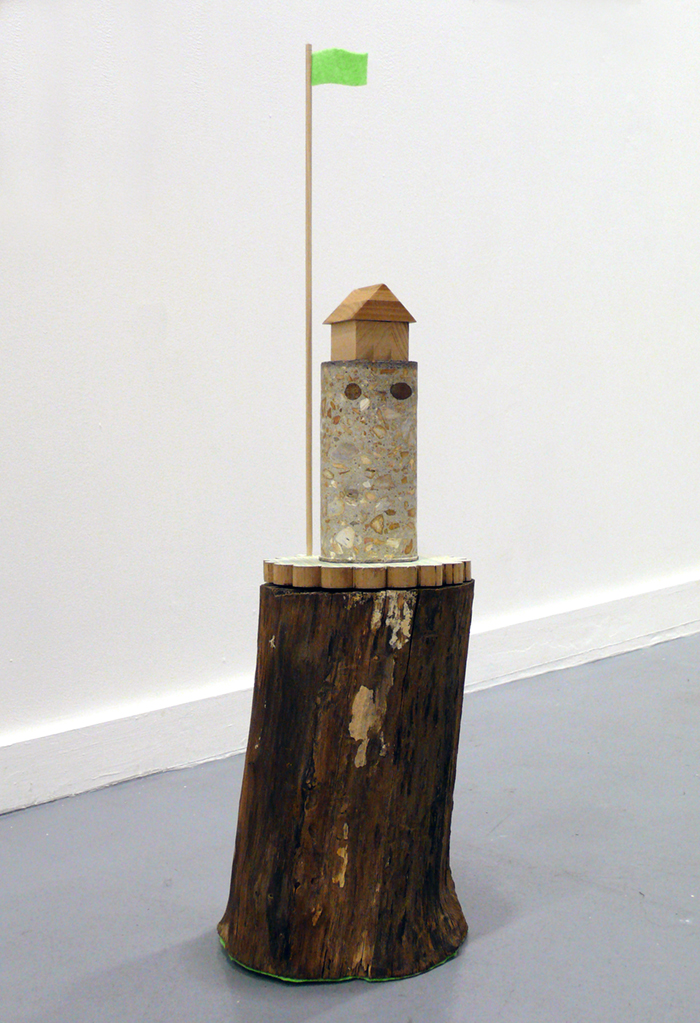 green flag outpost, 2014 | wood, yarn, cement, paint, dimensions variable
green flag outpost, 2014 | wood, yarn, cement, paint, dimensions variable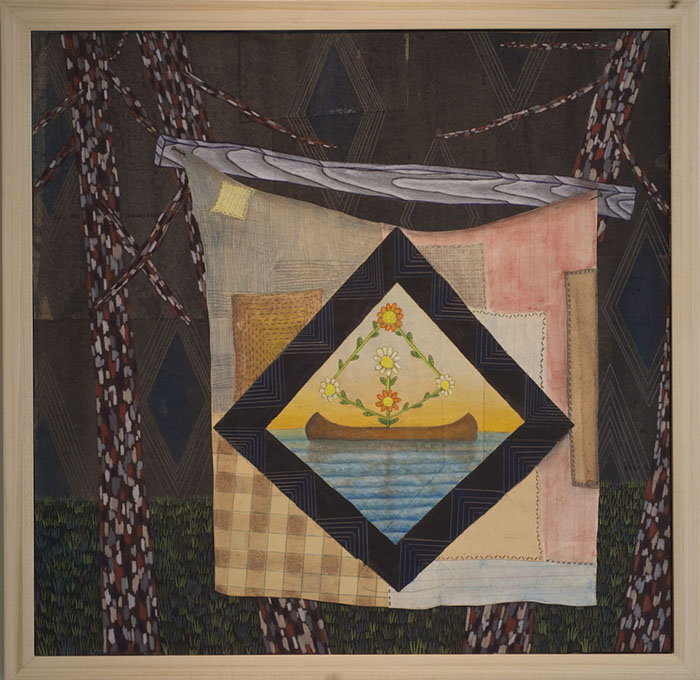 marker, 2013 | mixed media on panel, 19 x 18"
marker, 2013 | mixed media on panel, 19 x 18"While his paintings give us the tableau, his sculptures look as if they jumped right off the wall to the floor. When I asked him to explain the musical instruments, Reed answered: “The instruments came out of a similar impulse to the sculptures—just curiosity and trying to figure something out. The stump sculpture and the first gourd came at pretty much the same time. I made a recording of me playing the gourd that in my mind completed the sculpture, or at least it completed the experience that I wanted one to get from that piece.”
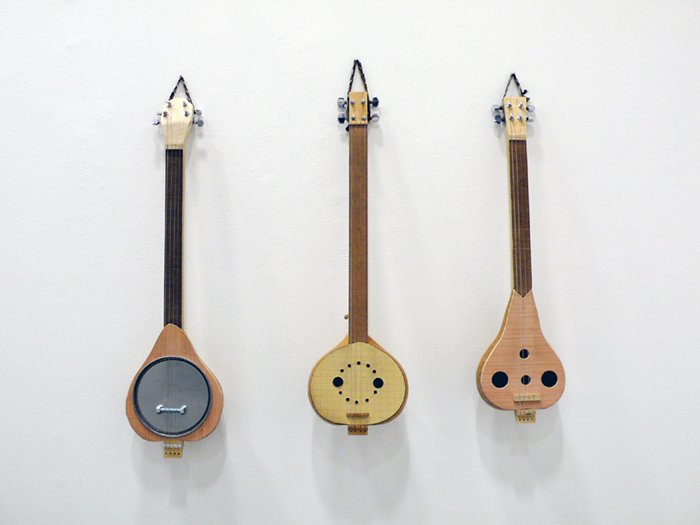
untitled (gourdjos), 2012–14 | gourd, wood metal, guitar strings
Reed went on to say that he has recently started structuring a group of drawings to reflect "a passage of time …. I find that choosing a time frame like dusk till dawn is general enough that I don’t feel confined by the parameters. That space in time becomes a little like the cemetery that Edgar Lee Masters used in Spoon River Anthology. It gives you a structure to hang your ideas on.”
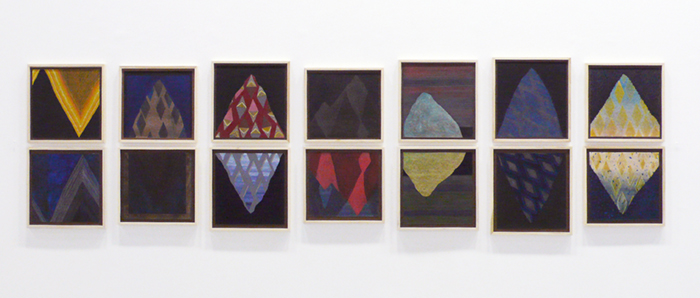
dusk til dawn, 2014 | walnut ink colored pencil, flashe, wood shelf, 96 x 16"
Reed mentions the Chicago Imagists and the artist H.C. (Cliff) Westermann as influences in his work, but also credits several self-taught, visionaries—one being the self-taught Chicago artist Joseph Yoakum (1890–1972). These connections create a beautiful continuum in contemporary art history, and Reed stands comfortably beside them all.
Reed’s creative output is matched only by his hard work ethic. A husband and father of two, Tom is the Master Printer at Island Press and Senior Lecturer in Fine Arts at the Sam Fox School of Design and Visual Arts at Washington University in St. Louis, MO.
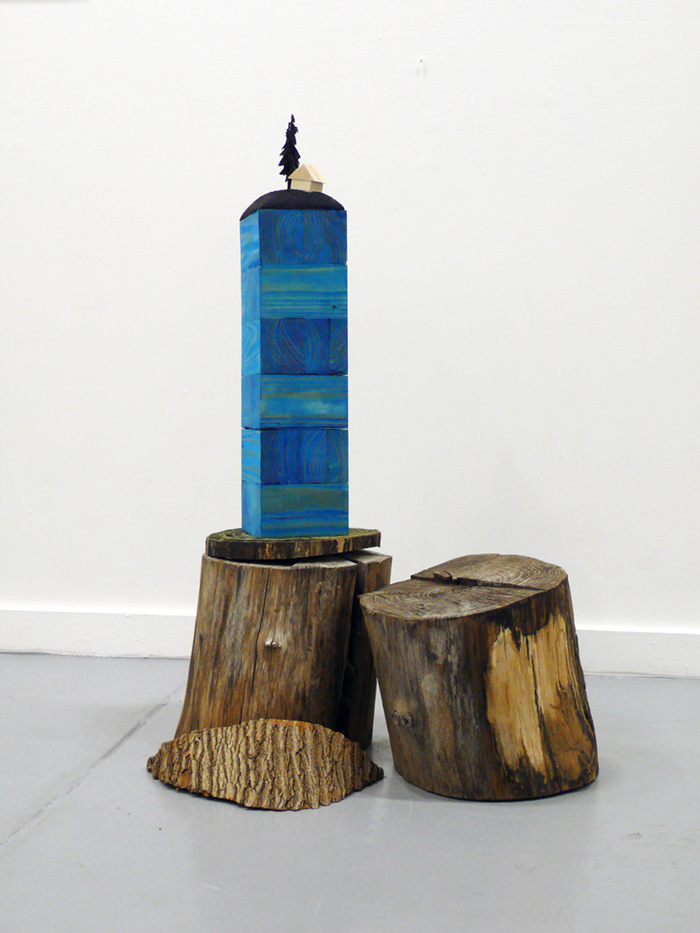
blue tower, 2014 | wood, foam, felt, paint, dimensions variable
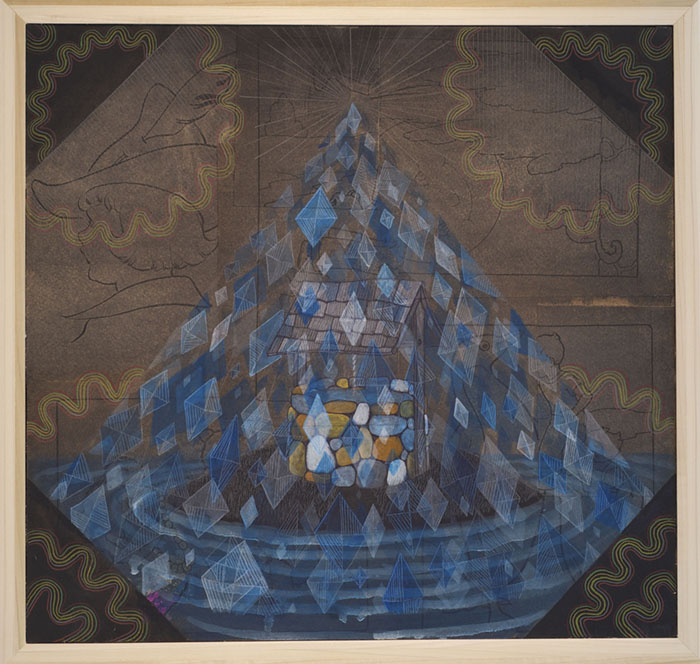 the source, 2014 | mixed media on panel, 20 3/4 x 19 1/2"
the source, 2014 | mixed media on panel, 20 3/4 x 19 1/2"
 the source, 2014 | mixed media on panel, 20 3/4 x 19 1/2"
the source, 2014 | mixed media on panel, 20 3/4 x 19 1/2" islands, flooded mountain, in the shadow, 2014 | walnut ink colored pencil, flashe
islands, flooded mountain, in the shadow, 2014 | walnut ink colored pencil, flashe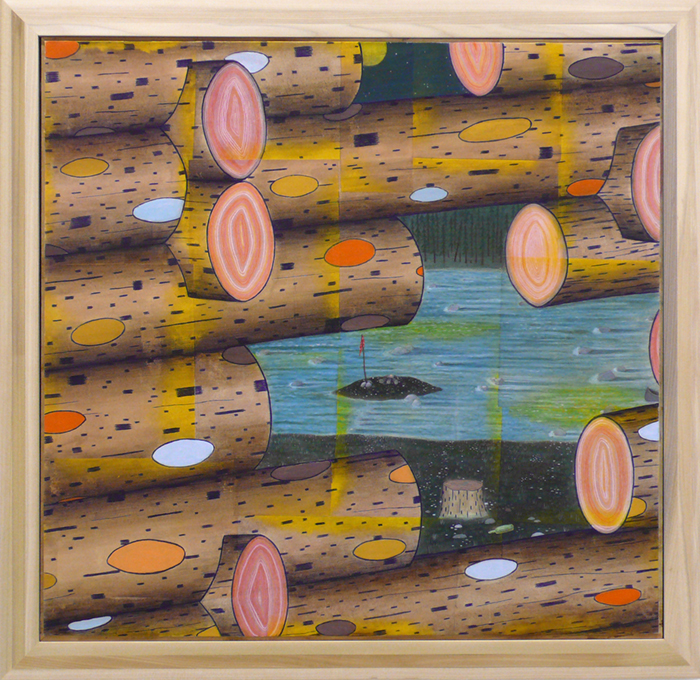 current at night, 2014 | mixed media and collage on panel, 40 1/4 x 39"
current at night, 2014 | mixed media and collage on panel, 40 1/4 x 39" dispersal and emptiness, 2014 | mixed media on panel, 39 x 39"
dispersal and emptiness, 2014 | mixed media on panel, 39 x 39"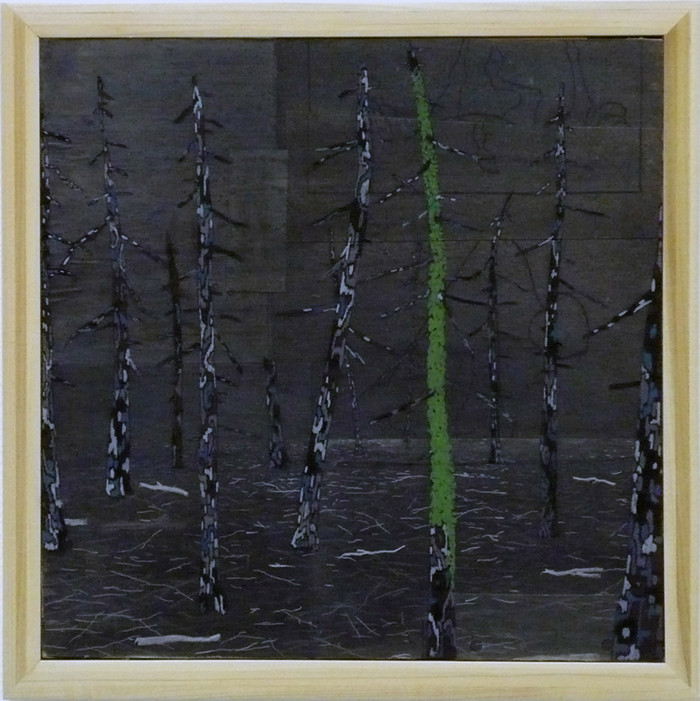 green tree, 2014 | mixed media on panel, 14 1/2 x 14 1/2"
green tree, 2014 | mixed media on panel, 14 1/2 x 14 1/2"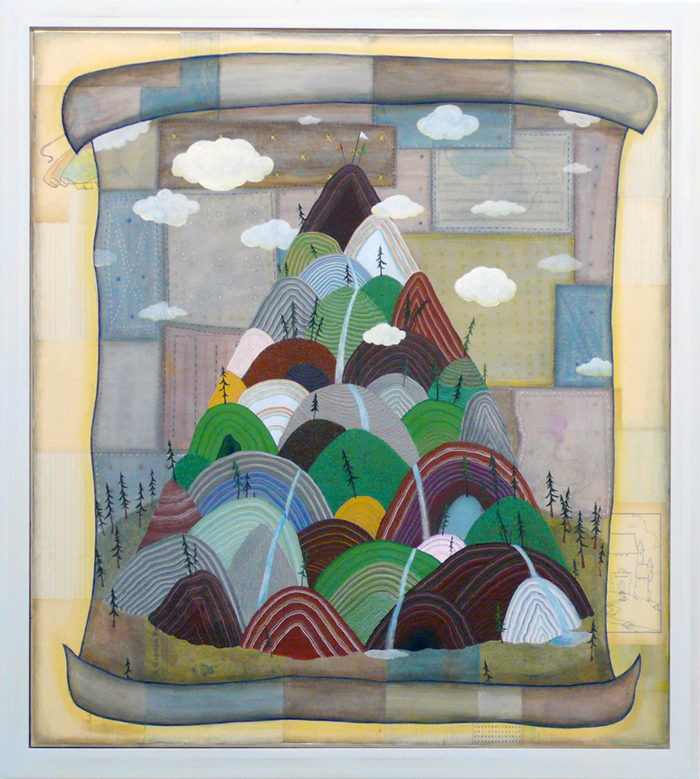 mountain me, 2014 | walnut ink colored pencil, flashe, wood shelf, 96 x 16"
mountain me, 2014 | walnut ink colored pencil, flashe, wood shelf, 96 x 16"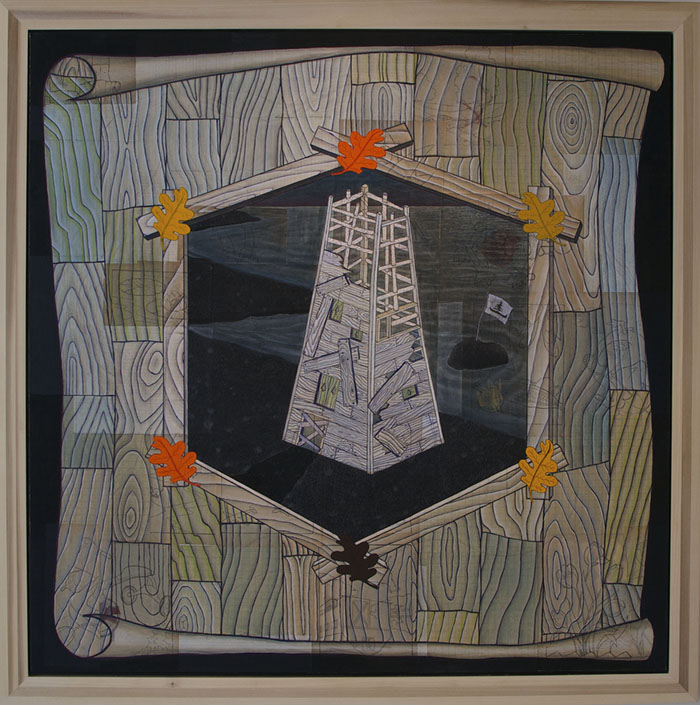 lookout, 2013 | mixed media on panel, 54 x 54"
lookout, 2013 | mixed media on panel, 54 x 54"All images courtesy Bruno David Gallery, St. Louis

